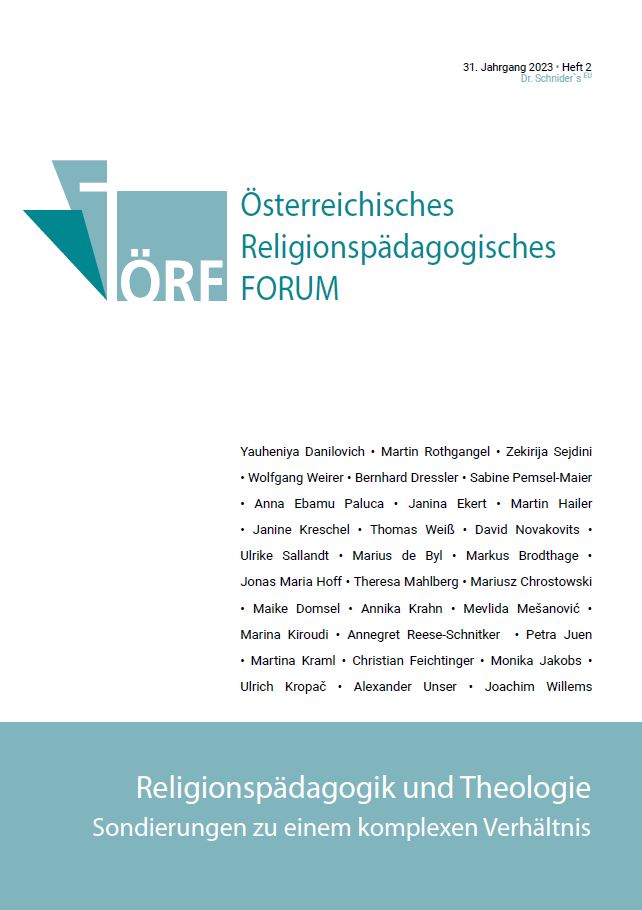Polish 'approach to a past world of tought'?
On christian personalism as a link between religious pedagogy and theology
DOI:
https://doi.org/10.25364/10.31:2023.2.9Keywords:
religious pedagogy, theology, personalism, PolandAbstract
Since the popularisation of the concept of personalism through the publication of W. Stern's 'Person and Thing' (1909), scholarly reflection in this field has flourished in Poland and continues to inspire numerous philosophers, theologians and (religious) educators. The Polish discourse on Christian personalism contains a certain paradox: on the one hand, it seems to contain well-known theses, but on the other hand it also makes it unmistakably clear that the complex relationship between religious education and theology must undergo a kind of consolidation on the basis of the 'mysterium personae'. In this scholarly-cognitive context, the purpose of this article is not only to analyse the understanding of religious education in Poland and the basic theoretical assumptions of Polish reflection on Christian personalism, but also to point out the resulting consequences for religious education research and practice.

